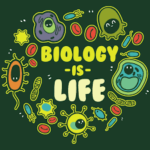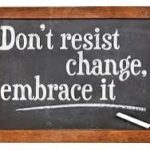Sustainable Fashion Trends in 2025: How Eco-Friendly Brands Are Revolutionizing the Industry

Fashion is often considered one of the most wasteful industries in the world. With fast fashion dominating retail, the environmental toll has been severe: from water pollution to excessive textile waste, the industry’s carbon footprint is substantial. However, the tides are changing. In 2025, sustainability is not just a trend but a critical factor in how fashion brands are operating and how consumers are making purchasing decisions.
Eco-friendly fashion is no longer just for niche markets or a small group of environmentally conscious consumers—it’s becoming the standard. From clothing lines made with organic materials to innovative designs that minimize waste, sustainable fashion is making waves. Here’s how eco-friendly brands are transforming the fashion industry, setting trends, and pushing the boundaries of creativity and sustainability.
1. The Rise of Circular Fashion
What Is Circular Fashion?
Circular fashion refers to a system where garments are designed, manufactured, used, and then reused or recycled, rather than being discarded. The aim is to extend the life cycle of products and reduce the environmental impact. The rise of circular economy models has led to fashion brands innovating with designs that focus on repairability, recyclability, and longer wearability.
Trends in Circular Fashion for 2025:
- Closed-loop Recycling: Brands like Patagonia and Reformation are leading the way by creating clothes from fibers that can be fully recycled into new garments. This reduces the need for virgin materials, cutting down on waste and carbon emissions.
- Take-back Programs: Companies are starting take-back schemes where consumers can return their old clothing to be either recycled or repurposed into new pieces. Brands like H&M have introduced programs where customers are encouraged to recycle old clothes in exchange for discounts.
- Rental and Second-Hand Markets: The rental economy is booming with platforms like Rent the Runway and ThredUp offering consumers a chance to rent or buy second-hand clothing, thereby reducing the demand for new garments.
2. Sustainable Materials Take Center Stage
Eco-Friendly Fabrics and Materials
The textile industry is notorious for its reliance on unsustainable materials such as conventional cotton, polyester, and leather. However, there has been a significant shift toward more sustainable materials in 2025.
Sustainable Materials Trending in 2025:
- Organic Cotton and Hemp: Unlike conventional cotton, organic cotton uses fewer pesticides and water. Hemp is another material gaining popularity due to its minimal environmental impact. It requires little water and is naturally resistant to pests, which means it doesn’t need pesticides.
- Recycled Materials: More brands are turning to recycled polyester, made from post-consumer plastic waste, such as water bottles. This helps cut down on the massive carbon footprint generated by virgin polyester.
- Mushroom Leather (Mycelium): In an exciting development, mushroom leather is being used as a sustainable alternative to animal leather. Brands like Moxham and MycoWorks are pioneering the use of this bio-based material, which is durable, biodegradable, and cruelty-free.
- Seaweed Fabrics: Seaweed-based textiles, such as SeaCell, are becoming more prevalent. They are biodegradable and contain natural antioxidants, making them both eco-friendly and beneficial to skin health.
3. Transparent Supply Chains and Ethical Production
In 2025, consumers are more conscious than ever about the origins of their products. Transparency in the supply chain has become a priority for sustainable fashion brands, who are being held accountable by a more informed consumer base.
Key Trends in Ethical Fashion Production:
- Supply Chain Transparency: Brands are using technology like blockchain to offer full transparency about where and how their clothes are made. This allows customers to trace the materials used and see if workers were paid fairly and treated ethically.
- Fair Labor Practices: Ethical fashion brands are focusing on providing safe working conditions and fair wages for workers, particularly in countries with poor labor standards. Brands such as Everlane have become well-known for their “Radical Transparency,” revealing their factory costs, workers’ wages, and the environmental impact of their products.
- Local Production: To reduce carbon emissions associated with transporting garments across the world, some companies are opting for local production or using nearshoring practices, bringing production closer to home markets.
4. Tech and Innovation in Fashion: Smart Clothing and AI
Technology is playing a key role in reshaping fashion in 2025, particularly in design, production, and consumer interaction. With artificial intelligence (AI) and smart fabrics, the boundaries between fashion and technology are blurring.
How Tech Is Shaping Sustainable Fashion:
- AI-Driven Design: Brands are using AI to create designs that are environmentally optimized. AI algorithms can predict trends, reduce waste in the production process, and help design items that are easier to recycle.
- 3D Printing: 3D printing technology is helping to create garments with minimal material waste. Brands like Danit Peleg are leading the way by designing custom-made 3D-printed clothing that doesn’t require the cutting and stitching involved in traditional garment manufacturing.
- Smart Fabrics: Wearable tech and smart fabrics are transforming the way fashion is used. For example, clothing that monitors health or adjusts temperature is being made from sustainable fabrics, providing both functionality and eco-consciousness.
5. Vegan and Cruelty-Free Fashion
In 2025, the demand for vegan fashion continues to rise, with a growing number of consumers seeking cruelty-free alternatives to animal-derived materials. The use of vegan leather and plant-based fibers is becoming increasingly mainstream, challenging the traditional notion of luxury and high-quality materials.
Vegan Fashion Trends for 2025:
- Cruelty-Free Leather Alternatives: Materials like Piñatex (made from pineapple leaves), cork leather, and apple leather are gaining popularity as substitutes for traditional animal leather. These alternatives are biodegradable and offer a similar aesthetic and feel to real leather.
- Vegan Fashion Brands: Companies like Stella McCartney and Vaute Couture have long been pioneers in the vegan fashion industry, and in 2025, more brands are incorporating cruelty-free materials into their collections, not just as a novelty but as a staple of their business model.
6. Slow Fashion: Embracing Timeless Pieces Over Trends
Slow fashion is a counter-movement to fast fashion, focusing on quality over quantity. The slow fashion philosophy encourages buying fewer, but more durable and sustainable, pieces that can stand the test of time.
Key Slow Fashion Practices in 2025:
- Timeless Design: Fashion brands are focusing on classic, timeless designs rather than chasing ever-changing trends. Consumers are encouraged to invest in high-quality, versatile pieces that last longer and age beautifully.
- Upcycling and Reworking: Brands are increasingly incorporating upcycled and reworked clothing into their collections, breathing new life into old garments and keeping them out of landfills. This practice not only reduces waste but also promotes creativity and individuality.
7. Consumer Education and Awareness
One of the most significant changes in the fashion industry in 2025 is the shift toward educating consumers on the environmental and social impacts of their purchasing decisions. Brands are leveraging social media, websites, and marketing campaigns to educate customers about the importance of sustainable fashion.
How Consumers Are Being Educated:
- Eco-Labels and Certifications: More fashion brands are adopting eco-certifications such as Global Organic Textile Standard (GOTS) or Fair Trade to help consumers make informed decisions. These certifications ensure that the products meet specific sustainability and ethical standards.
- Sustainability Campaigns: Social media campaigns, documentaries, and podcasts have brought sustainability into the mainstream, with influencers and fashion icons promoting eco-friendly fashion and encouraging their followers to make more responsible choices.
Conclusion: The Future of Sustainable Fashion
Sustainable fashion in 2025 is not just a fleeting trend but a transformative movement that’s reshaping how the industry operates. As consumers demand more ethical choices, brands are stepping up to innovate and adopt practices that minimize environmental impact, promote ethical labor, and reduce waste. With advancements in technology, the use of sustainable materials, and a shift toward circular economy models, the future of fashion looks bright and eco-conscious.
As we move forward, it’s clear that the fashion industry must continue to evolve, embracing sustainability not as an option but as a necessity. For those who are eager to be part of this change, eco-friendly fashion offers a path toward a more responsible and beautiful world.



